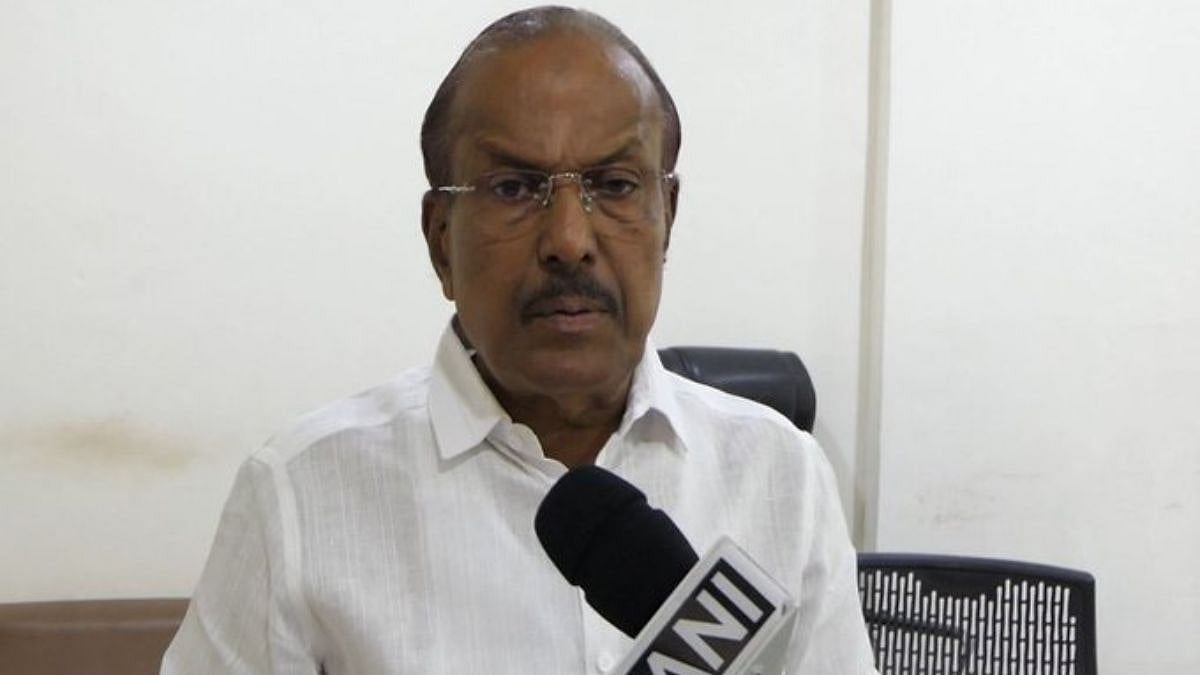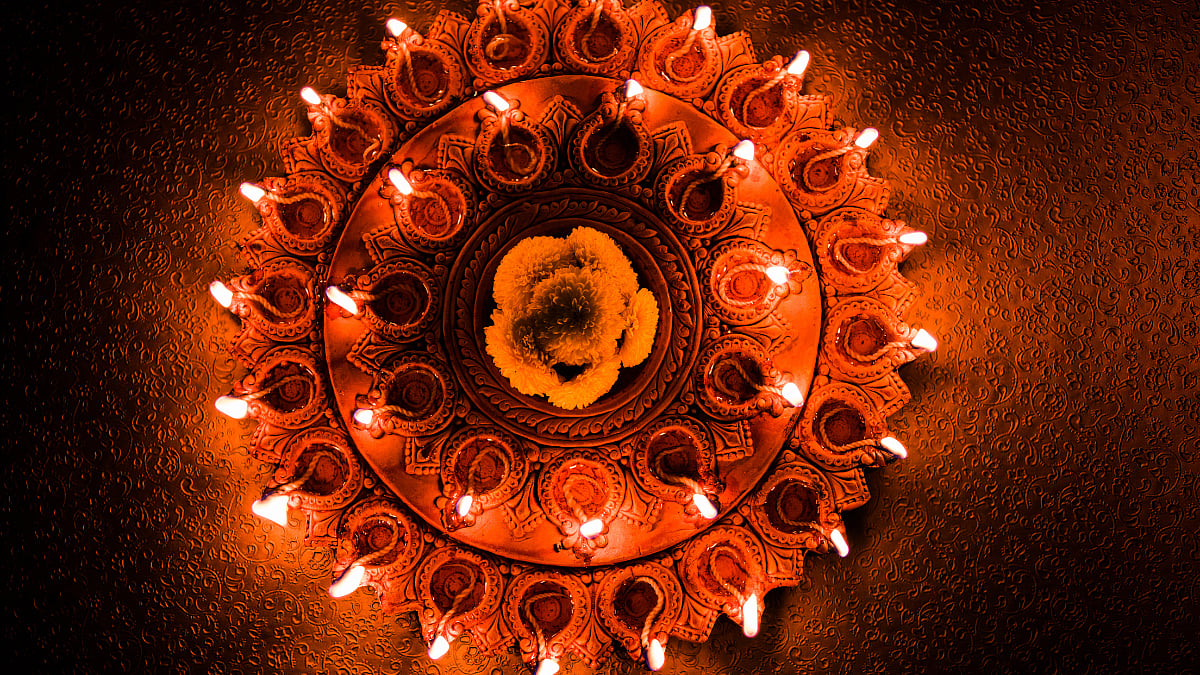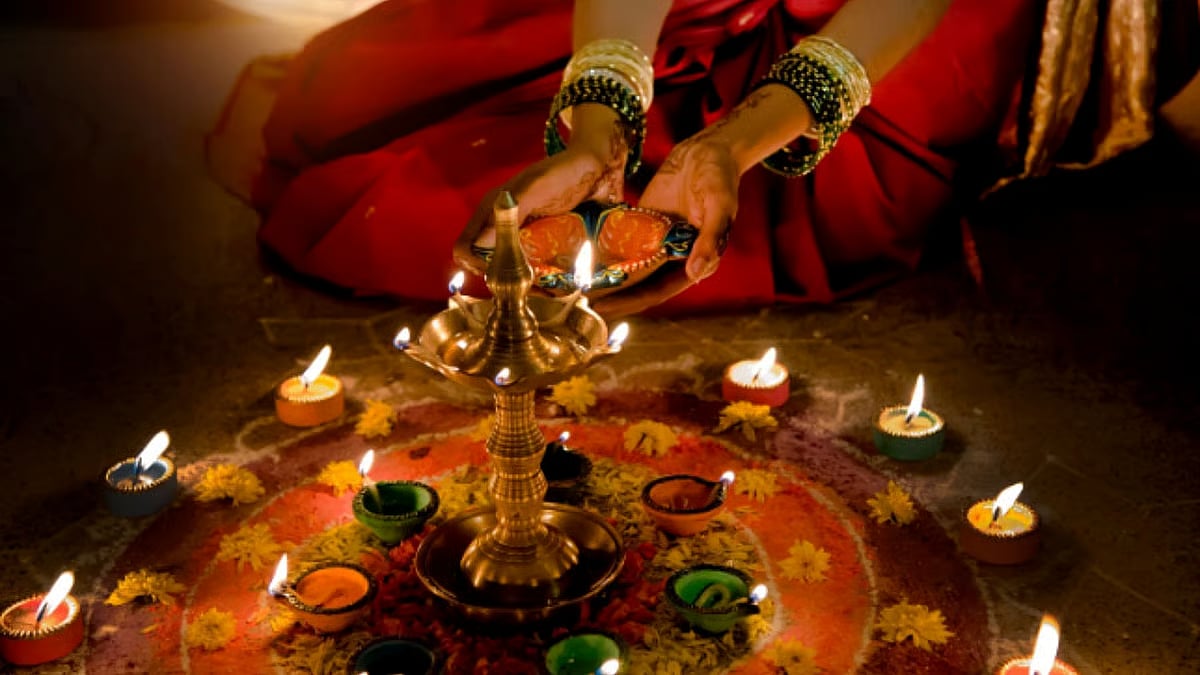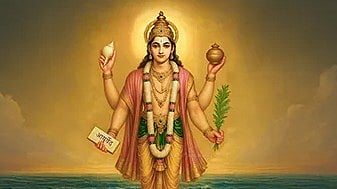Bhagwan Sri Ramana Mahararishi has written Upadesha Saram in Tamil, Sanskrit and also in Telugu and Malayalam. These are not translations, but are written by him. Interestingly, in Telugu, he has written in poetry as well as in prose form, which gives more clarity on certain verses.
The Soul is eternal, which you can appreciate by just looking into the eyes of Bhagwan Sri Ramana Maharshi’s picture with devotion. When deeply connected, you can experience an ocean of bliss, tranquility, serenity, deeper inner peace and greater stillness. This is because, eyes are like windows of the Soul and windows to the Soul.
Murugnar, a Tamil poet, was analyzing a very ancient teaching of Lord Shiva. He thought that the most able person to discuss about these teachings was Bhagwan Shri Ramana Maharishi himself and requested him to explain these teachings.
This teaching was originally given by Lord Shiva to certain Ascetics or Rishis who were living in Dharkvan. These Rishis were devoted to ritualistic procedures and spent most of their time performing various rituals. They believed in the supremacy of action in getting results and that God has no role to play in it. They achieved great results and thought they can get liberated by their rituals.
Despite gaining many siddhis, they experienced a sense of incompleteness and dissatisfaction. Lord Shiva wanted them to move forward in evolution. He first chose to test them, so that they understood the need to advance. Lord Shiva appeared as a handsome man. All the wives of the Rishis’ were entranced and drawn towards Him. Rishis thought that their wives were committing a sin and so, started negative thought force and actions against them. Then, Lord Shiva appeared as a beautiful woman in front of the Rishis. All the Rishis were now mesmerized and captivated by Her beauty. They were at first blaming their wives, but now even they followed suit! Soon they realized that they were being fooled and tried to attack Him. However, they failed. They soon became conscious that this must be some superior and exalted being, who must have come to teach them a lesson. So, they surrendered and recognized their limitation. After they surrendered, Lord Shiva gave them this profound teaching. You cannot get any deeper teaching without surrender! If Lord Shiva had appeared directly in front of them, probably they would not have paid attention.
When Murugnar was going through all this ancient text, he sensed that he could not further explain the teachings given by Lord Shiva and do justice to this important subject. So, he requested Bhagwan Shri Ramana Maharishi to impart this knowledge, because he considered him as a direct aspect of Lord Shiva Himself.
Truth is dynamic and universal. Let us see how to imbibe these teachings into our life. We have picked only 13 out of the 30 verses for this discussion.
Verse 1:
Karturaajnayaa Praapyate Phalam ||
Karma kim Param karma Tajjadam ||1||
This is the first verse. It indicates that you get the fruit of action (praapyate phalam) based on the law decreed by Kartur, or Ishwara Himself (karturaajnayaa). This is therefore a Divine law, the Law of Karma! Hence, you cannot escape from this law other than by using this law itself. Is this karma Supreme? (karma kim param?) That karma is jadam or grosser (karma tajjadam or tat-jadam). This is because, it is connected with the personality, which is manifested in the Physical, Etheric, Emotional and Mental planes. So, though your personality reaps the fruits of action, it is grosser only.
Verse 2:
Krithimahodadhau Patanakaaranam ||
Phalamasaasvatham Gatinirodhakam ||2||
Mahodadhav means great ocean. This verse implies that karma (krithi) takes you into the great ocean of repeated cycle of action. This is the cause of your own fall (patanakaaranam), as you get stuck in this loop. Those who could have gone up, get delayed due to this. The fruit of action (phalam) is asaasvatham, or transient. It is an obstacle on the path, i.e., gati nirodhakam. One must ultimately raise up to overcome the Law of Cycles, the Law of Change and the Law of Karma to get really liberated.
Verse 3:
Ishwaraarpitam Necchayaa Krtam ||
Chittashodhakam Muktisaadhakam ||3||
Then why generate karma? This verse answers the question. Necchayaa krtam; action which is without desire for oneself. Chitta shodhakam; that purifies the mind. Muktisaadhakam; this (such karma or action) is an instrument for liberation. Ishwaraarpitam; offering (your actions) to God (without any self-interest).
Consequently, whatever actions you perform to help humanity or other kingdoms of nature, by opening your heart; guiding; nurturing; channeling, such as Planetary Peace Meditation or Metta Meditation; doing prayer, such as, Great Invocation; healing; blessing; empathizing; addressing others’ need; etc., would be selfless and as an offering to God, Ishwaraarpitam.
Always check if your actions are for self-interest. Instead perform action with a feeling or intention of offering, upgrading and utilizing your capabilities properly for the benefit of others. Such actions purify your mind, chitta-shodhakam. The entire personality gets purified, as the mind includes mental, emotional, etheric and physical vehicles. Thus, such karma, though is grosser, still is an instrument for liberation!
This is the teaching on Law of Karma by Bhagwan Shri Ramana. Therefore, you must really extend whatever you do without self-interest and with a feeling of offering!
When you give something, do not think that you are a giver. Instead, be grateful that you have an opportunity to give when somebody is in need. You are only a channel. Watch for the pride when you think that you are a giver, you have donated, you have done service, you have healed, etc. Remember, you are a channel for healing, giving, sharing, etc. Be thankful that you have enough that you can donate. Madhava seva is not different than manava seva! All are an aspect of God. So, extend help with gratitude. When you heal or help someone, thank them for the opportunity given to you. This can purify your mind and liberate you. Manifest your greatness by doing service. You are born to manifest your greatness!
Verse 4:
Kaya-vaang-manah Kaaryam Uttamam||
Pujanam Japaschintanam Kramaat ||4||
Your actions are superior (kaaryam uttamam), which are done by body, or using speech or in mind (kaya-vaang-manah), when you do puja, japa and chintanam or meditation in this sequence, in ascending order. Japa is superior than puja, and meditation is loftier than japa. Physical action, speech and mind (i.e., thoughts and emotions), are in sequential order of greater and greater significance. That is, worship (pujanam) done by body; bhajans, mantra chanting, etc. and japa done by speech and chintanam (dhyana) by mind respectively, are in increasing order (kramaat; in that sequence or order) of superiority. While using speech, lower the voice, the better. Or best when done in the mind. Maharishi Ramana had once said that among the mantra chantings, the most superior is the Gayathri mantra.
Depending on their development, people move from one to the other (puja, japa, chintanam). They may integrate and use all of them too. However, dhyana or chintanam or awareness, is grander than the other two.
Verse 7:
Aajya Dhaaraya Srotasaa Samam ||
Sarala Chintanam Viralatah Param ||7||
Like continuous flow of ghee (aajya dhaaraya) or like stream of river (srotasaa samam), constant, uninterrupted, continuous practice of dhyana (sarala chintanam) is greater than broken or interrupted dhyana (viralatah param). You may practice dhyana, but when interrupted due to some work, finish it and get back to it. With regular practice you get to this state of uninterrupted inner awareness even when you are working. Here, constant inner awareness is dhyana.
Verse 8:
Bheda Bhaavanaath Soham Ithyasau ||
Bhaavanaa Bhidaa Paavani Mataa ||8||
There is a feeling of differentiation that I and God are separate (bheda bhaavanaath). However, dhyana or awareness that I am He or God (soham ithyasau), without feeling of any duality (bhaavanaa bhidaa), is considered Supreme (paavani mataa). This suggests that you are merged in Him. This is a stage that you must come to, by greater and greater practice of awareness or dhyana. Dhyana can lead you to your Source. That is, from the Soul to Self, the Paramatma, and then to the Supreme God. Paramatma is connected to God and One with God.
The process by which you reach Him is through continuous awareness as mentioned in the previous sloka or verse. And slowly you realize that there is no separation. You come to this stage only after experiencing certain level of Samadhi, beyond mind. This experience of Oneness takes you to your true nature of your Soul and further even higher. This can be achieved with regular sadhana.
Initially you might start with broken awareness and slowly start to have continuous awareness for certain duration, say, 5 minutes, 15 minutes, 40 or 50 minutes. You may slowly prolong your awareness. Gradually, a stage will come wherein you are all the time in awareness of your inner true state, not of your emotion or thought, but of your true, expanded, merged state and then, duality is lost. When Oneness is achieved and you align with Atma, you automatically experience Bliss. This is a very advanced state achieved by many years of dhyana. It requires regular sadhana to realize “Aham Brahmasmi”, that there is no separation, I am He, without any duality!
Verse 10:
Hrit Sthale Manah Svasthathaa Kriya ||
Bhakthi Yoga Bhodaascha Nishchitam ||10||
In the heart dwells your Soul (source of physical manifestation). That is, Lord is in your heart. You are an aspect of Him, which is in your heart itself. Hence, hrit sthale manah; you must keep your mind established in the heart, using bhakti or any of the yogas. Bhakthi is also bhakthi yoga and bhodaascha means jnana yoga. Nishchitam here means definitely achieved by any of the yogas. Awareness or dhyana is already covered as part of one of the yogas. Svasthathaa kriya means always being in that place or state.
Thus, the verse suggests, stilling your mind and sustaining awareness in the heart continuously, is right action or karma. In whichever way you still the mind and be aware of the heart center continuously, you will achieve Oneness. This is a definite way, whether it is by bhakthi or any other form of yoga or union by integration of different yogas, like, jnana yoga or dhyana yoga. Any yoga is a definite way, for all of them help abide within the heart. This awareness also comes from a sustained effort.
Linking with the above statement, start with the awareness of your own heart. This automatically makes your heart chakra very big. When you keep on being aware of the heart chakra, which involves prolonged one pointedness (dharana), it will lead you to awareness, by any yoga. You achieve jnana, which means you lift up awareness to your Higher Soul and experience direct perception. All this is just by abiding in the heart, stilling the mind, having focus and awareness simultaneously. You must practice to sustain it. Do not get distracted, carried away or diverted. Keep your mind under check. Be there and sustain there. Practice dharana to sustain the awareness there. That is a definite way!
Quick recap of this verse: Stilling your mind and sustaining awareness in your heart is the right action or karma. This is a definite way whether you achieve this by bhakti yoga, jnana yoga, dhyana yoga or any other yoga (yoga includes all forms of yoga or union including ashtanga yoga as per some commentaries)
Verse 11:
Vaayurodhanaath Leeyathe Manah ||
Jaala Pakshivad Rodhasaadhanam ||11||
When you regulate your breathing (vaayurodhanaath), you regulate your mind (leeyathe manah). Like a bird stuck in a net is restrained from flying (jaala pakshivad), you can regulate this uncontrolled mind by regulated breathing. Example: Rhythmic Yogic Breathing or other breathing exercises. When not regulated, the mind is freed again. Like a bird in the net is restrained under control, but when it breaks the net, it flies away; similarly, the mind comes under control by constant regulation otherwise it will again go out of control.
This is one of the methods of achieving the first stage of regulating the mind. Rodhasaadhanam; repeated regulation by sadhana (breathing), is important to achieve the state of awareness of your mind to further move ahead. How can you practice awareness with a wandering mind? This is one of the simple and powerful ways to regulate the mind.
Verse 14:
Praana bandhanaath leena maanasam ||
Eka chintanaath naashametyada ||14||
First restrain the mind as said in the previous verse 11. When you restrain the breathing (praana bandhanaath), you restrain the mind (leena maanasam). Then, focus on only one thought (eka chintanath), such as, “I Am Atma”. By being absorbed in one such thought, the mind ceases to exist. The independent existence of mind finishes (naashametyada), i.e., dissolved, annihilated, destroyed. All other thoughts have duality. “I am Atma” has no duality. Absorbed in such a thought, ends the existence of mind.
Mind becomes part of, or merged as an instrument of the Soul. Whatever you do now is not by the mind, but by the Soul himself. Thus, there is no lower nature anymore. It is full pratyahara. That is, you have withdrawn from the lower nature and gone beyond the mind. There is no mind essentially to do anything on its own. Thus, you do action without any lower attachment.
So, the first step is to regulate the mind using regulating breathing. Then, focus the mind on one thought, Dharana. Remain absorbed in it, which is Dhyana or prolonged awareness. Then, the mind ceases its existence!
Verse 16:
Drishya vaaritham chitam aatmanah ||
Chitva darshanam Tatva darshanam ||16||
By reflecting inside, you withdraw from the external objects (drishya vaaritham). This withdrawal from the external, leads to knowing who you are, the awareness of your Thyself within (chitam aatmanah). With this awareness of Thyself (chitva darshanam), you realize your essence (tatva darshanam). You experience the real essence, the Paramatma tatvam. Tatvamasi means I am the tatvam or essence. This is Self-Realization!
Verse 24:
Isha Jeevayo Vesha Dhee Bhidaa ||
Sat Svabhaavato Vasthu Kevalam ||24||
Jeeva is the one who incarnated into the bodies. The difference between Ishwar and Jeeva is due to these bodies of the personality (vesha dhee bhidaa). You realize your true nature, which is only the essence in reality (sat svabhaavato vasthu kevalam). In actuality there is no separation, there is only Oneness. When you remove the limitation of the bodies or identification with the bodies, which is due to ignorance, by right awareness, you will experience that God and you (Ishwara and Jeeva or Isha Jeevayo) are One, that there is only Oneness and no separation. Separation is only an illusion, as it is transient. However, it is for a purpose. Spiritually there is only Oneness.
Verse 26:
Atmasam-sthithih Svaatma-darshanam ||
Atma-nirdvayaat Aatma-nisthathaa ||26||
You are all the time abiding in Atma (atmanisthathaa), experiencing no duality (nirdvayaat). This is your true nature, not separate with anything else and also the Supreme. Knowing thyself and being One with that Atma constantly, atmasam-sthithih, you move around and work as a Soul all the time. With this atmasam-sthithih, you are all the time experiencing atma darshanam (svaatma refers to one’s own Atma) and nirdvayaat, i.e., understanding that there is no duality. No duality and only experiencing Atma is atmanirdvayaat. Further, all the time abiding in that Atma (atma nishthathaa).
This is a very high level of Oneness, abiding in complete Thyself (Atma, Budhi, Manas), moving all the time with that nishthathaa which is not disturbed. You are completely established there. As spiritually there is only Oneness, you lift to that level and are only One Atma. There is no duality! It is a stage into Thyself fully, moving towards Divine Self, and to the Source.
Verse 29:
Bandha Muktyathetham Param Sukham ||
Vindhathi iha Jevastu Daivikah ||29||
While describing this verse in his prose translation in Telugu, Maharishi Ramana used the word “Punya Purusha”. Purusha here refers to Paramatma. He also mentioned that such achiever experiences Bliss, Parama Sukham, beyond all the happiness, which is deep Bliss, Parama Ananda, Parama Sukham! Punya Purusha experiences no bondage and also no liberation or is beyond bondage and liberation (bandha muktyathetham). He has gone beyond both. When you experience the Soul nature and go into the state of Turiya, you are liberated from the bondage. But here he says you are beyond even liberation as well as bondage. This is beyond pancha koshas, into the area aligning with your Divine Self or Paramatma. You experience supreme Bliss. So, there is complete merging. This actually refers to the achievement of Nirvana, the merging with Paramatma. You are now beyond bondage and liberation, like, trikalateetam. It is beyond the past, present and future. Vindhathi iha; achieves here itself. Jevastu Daivikah; the individual or Jeeva merges with the Divine. Jeeva becomes Punya Purusha.
To summarize this verse, the one who realizes Thyself fully, the Punya Purusha, attains supreme happiness which is beyond bondage or liberation. This is Nirvana or Self-Realization.
Always dwell on this saying by Bhagwan Sri Ramana Maharshi Himself, in relation to Upadesha Saram discussed above, “Deham Naham; Koham, Soham!” Deham is body. Naham means “I am not” or “I am not the body”. Koham is a question, “then who am I”? Soham denotes “that I am”. “I am that I am” means I am the Soul. Further realize that “I am the Soul with bodies and also One with the Paramatma”. Paramatma is a fragment or child of Parabrahman and always One with Parabrahman. AlI are One! Prajnanam Brahman!
Therefore, we do Soul Affirmation as, “I am not the body. I am the Soul. I am a spiritual being of Divine intelligence, Divine love and Divine power”.
Soham asmi means “I am that and this also comes from that. This is not separate from that.”
This is a profound teaching given to the Rishis by Lord Shiva. By understanding it, we can imbibe the knowledge, practice diligently, achieve a state of Oneness with Thyself, and attain Nirvana. You must first regulate and come into balance in order to prolong your awareness. Start being aware of your inner state, not broken, but continuous. By constantly being aware of your inner state, you realize you are He. Ultimately you know Thyself, then Divine self. You are He in three stages, as a Soul, as a Paramatma and as Parabrahman. You recognize that you and He are One and also One with God and One with all! Prajnanam Brahman!
This is just an attempt made to dwell deeply and put the teaching in simple terms, so that you can do your practices with deeper understanding, awareness and proper de-attachment. Also know that you are a channel for teaching, healing or helping. You must utilize your capability with this feeling and when you offer this way, without self-interest, it purifies your mind and that is the instrument for your liberation. You can practice the integrated teaching of Yoga Prana Vidya to achieve this.
You may join our daily online sessions to practice breathing exercises to regulate the mind, Forgiveness Sadhana to let go of the past and practice loving kindness meditations, such as, Planetary Peace Meditation, Metta Meditation and Great Invocation prayer, to channel energies to the entire mother Earth and especially to your environment in these pandemic times. You can also experience a powerful guided Divine healing during these sessions. These online sessions are now extended up to 31st March 2021 @ www.facebook.com/ShriNJReddy. Timings: Morning 7.15 AM, Afternoon 1.00 PM, Evening 6.30 PM.
You can also try our YPV Sadhana app, which is available in many languages, with guided tracks for Planetary Peace Meditation, breathing exercises and forgiveness practice. These techniques also strengthen and upgrade your immune system.










